Homemade Dish Soap Bar Recipe – Zero Waste & Works!
For years, I wanted to swap out store-bought dish soap for something homemade, natural, and ideally without the waste. This homemade dish soap bar recipe is the answer! Read on to learn how to make it yourself.
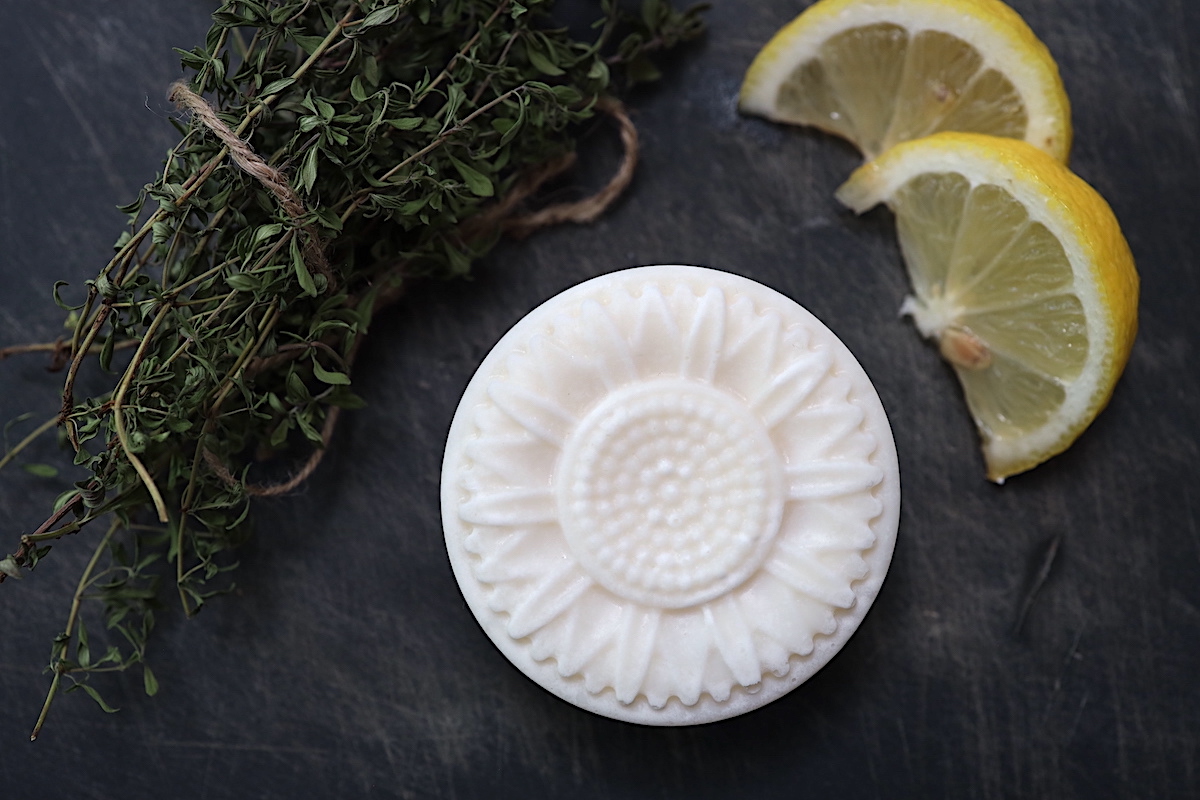
I’ve always had sensitive skin with dry skin plaguing me most of my life. For the last decade, I’ve been slowly experimenting with natural, DIY skincare recipes to swap out conventional options. It started with tallow balm and shampoo bars and then deodorant, sunscreen, and magnesium lotion.
After creating a natural, homemade skin care routine that we love, next was to start making our own cleaning and home products. Dish soap was the first on our list. Because, as a family that cooks a lot without a dishwasher, the dirty dishes pile up quickly and good dish soap is very important!
Why Natural Dish Soap Bars
My first jobs were all in food service, working for several restaurants and hospital and university cafeterias. I’ve done my fair share of dishes using heavy duty conventional dish soap that always left my hands dry and breaking out in rashes.
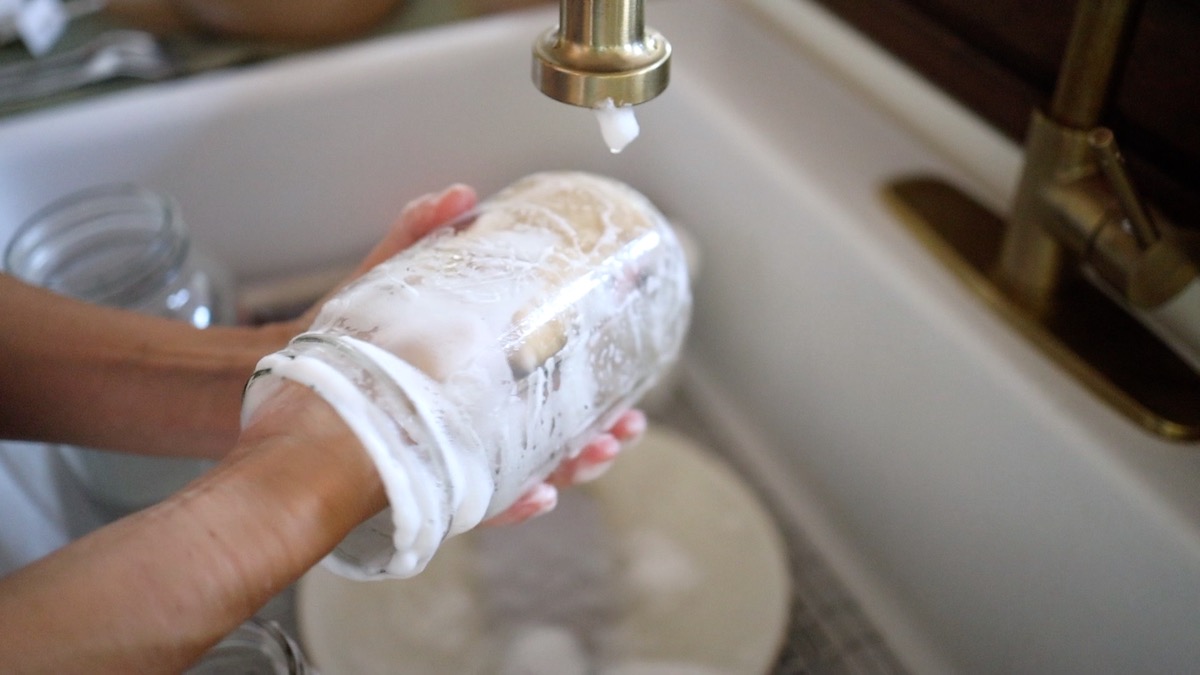
Store-bought dish soaps are typically made with toxic ingredients like sulfates (i.e. lauryl sulfate) and fragrances, amongst others unwanted ingredients! Not the sort of thing that I wanted to be rubbing on my hands or breathing in, or with the residue possibly ending up on the food that we eat!
These homemade dish soap bars are a more gentle soap that still cleans great, leaves hands feeling silky smooth, and creates no plastic waste!
What Oils to Use?
This is where the fun of soapmaking begins! There are so many options and types of oils that can be used depending on the type of soap you are trying to create. Each oil has a rating in terms of specific qualities like hardness, conditioning, bubbly, cleansing, and longevity. This chart is so helpful in breaking down all of that information.

For making my own dish bar soap recipe, I knew I wanted something that was going to be more cleansing and harder than your standard body soap or hand soap. This is to make sure dishes are left clean and the bar would withstand regular water use without melting away.
When it comes to cleansing, coconut oil is supreme. But it can also be harsh and dry out skin. I wanted to compliment that with castor oil known for its properties of being conditioning or adding moisture along with helping to create a rich lather.
Tallow (rendered beef fat) is my go-to in skin care recipes because of how compatible it is with skin. It’s also full of fat-soluble vitamins, minerals, and other properties that really leave skin feeling nourished. I use the wet method to render beef fat into tallow so it’s white and odorless.
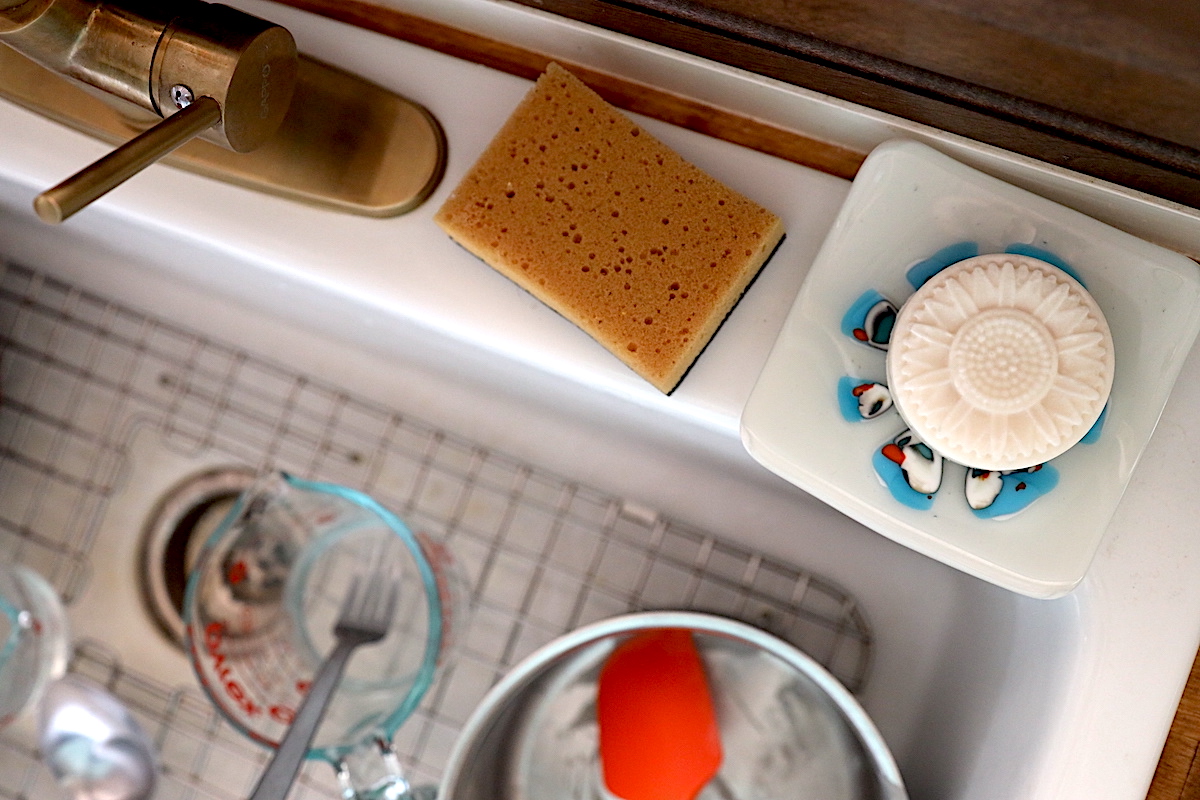
What do you need to get started?
The Ingredients:
Coconut Oil – Coconut oil is the main ingredients in this bar soap. It is the most cleansing oil as well as adds to the hardness and bubbles the bar creates. Our favorite place to purchase coconut oil is in the 5-gallon buckets from Azure Standard. The price and quality are the best we’ve found and coconut oil is a staple in both our kitchen and DIY recipes.
Castor Oil – There is just a small amount of castor oil in this recipe. But it’s important to help offset the harshness of the coconut oil. Castor oil is known for it’s conditioning or how it adds moisture and supports lather. To prevent rancidity, we always look for organic castor oil stored in a dark glass bottle.
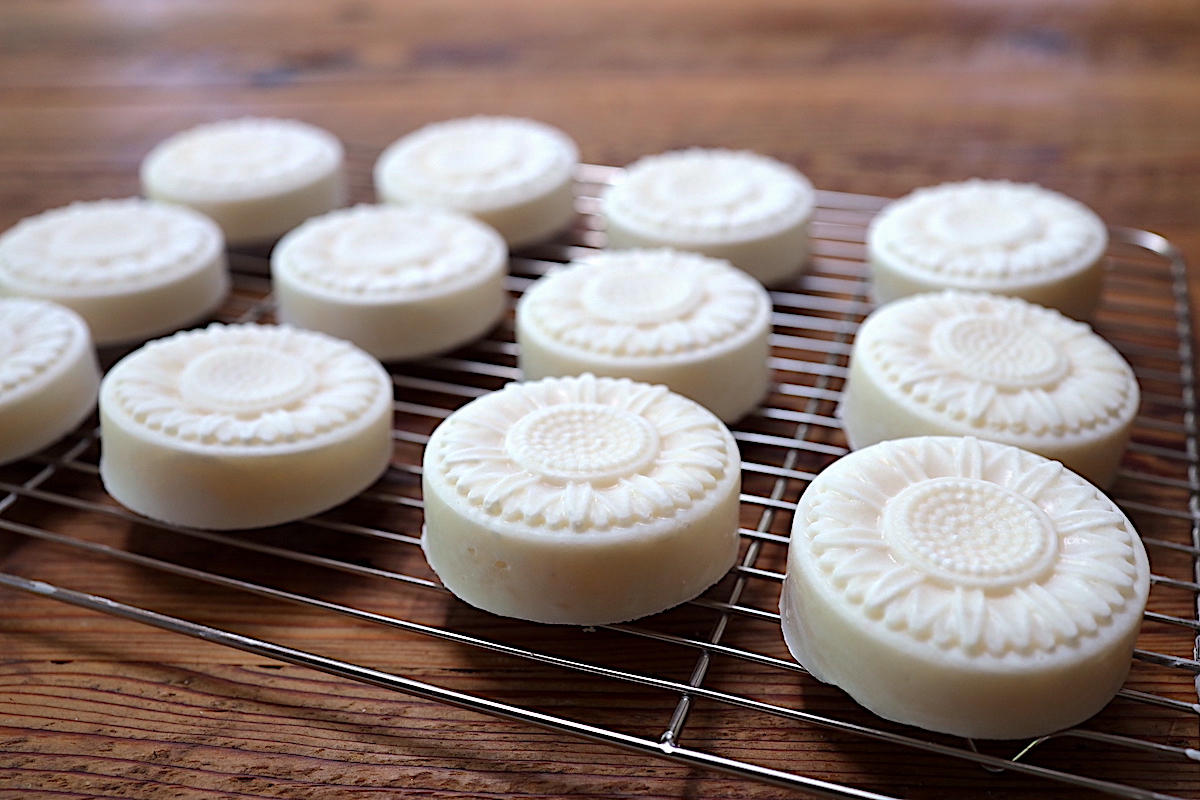
Tallow – Because tallow compliments skin so well, I like to add at least a small amount into all of our skin care recipes if I can. It also helps to add hardness and longevity to these bars of dish soap. This post shares how we render it so that it is odorless for using in skin care products. If you’d rather create a dish soap bar without the tallow, there’s an alternative recipe below that uses only coconut oil and castor oil.
Lye – Also known as sodium hydroxide or caustic soda, is essential in the soap making process. The reaction between the lye with the oils neutralizes the lye and turns the oils into a solid soap. That process is called saponification and makes the lye completely safe to use in soap once the soap has been cured.
Water – Lye is added to the water to make your lye-water solution. For best results, use filtered or distilled water because tap water or hard water can disturb the saponification reaction and lead to inconsistent results.
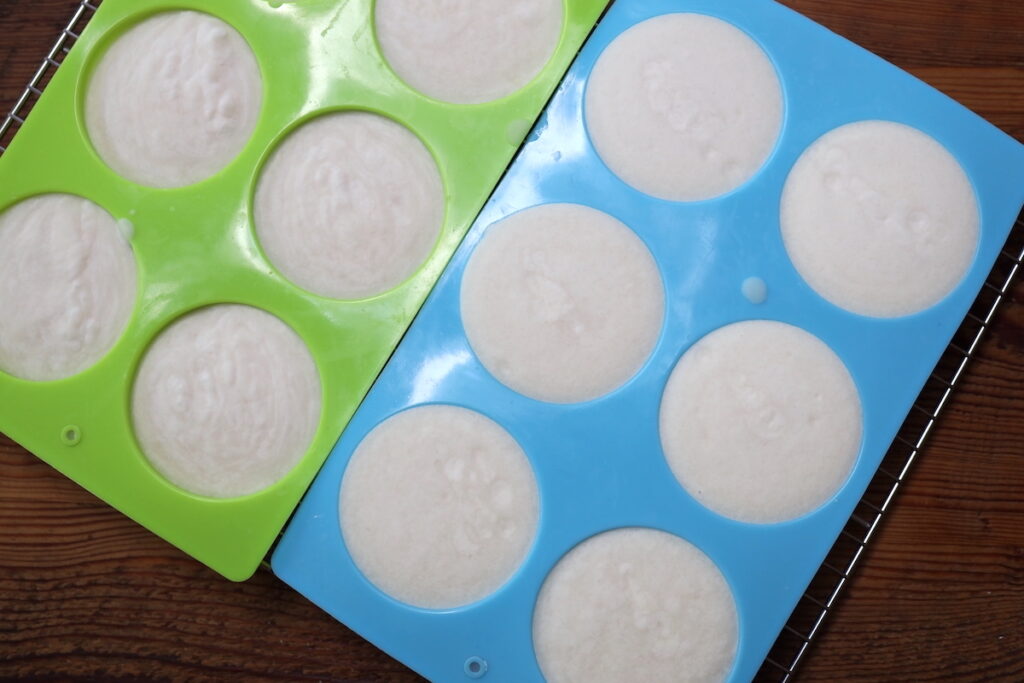
Essential Oils (optional) – We like to add 15-20 drops of citrus oils to our dish soap bars. Lemon essential oil or orange oil adds a fresh fragrance but is also great for cleaning and are antibacterial and antiviral. But you can play around with adding different essential oils of choice. We love to purchase essential oils from Plant Therapy.
The Equipment:
Kitchen Scale – This is used for measuring all of your ingredients.
Small/medium saucepan
Stainless Steel Bowl and Spoons for lye mixture
Immersion or Stick Blender
Soap Molds – We have both a standard bar soap mold that we use when we want to slice soap into a standard bar shape. Or, we recently purchased these sunflower molds that I am loving!
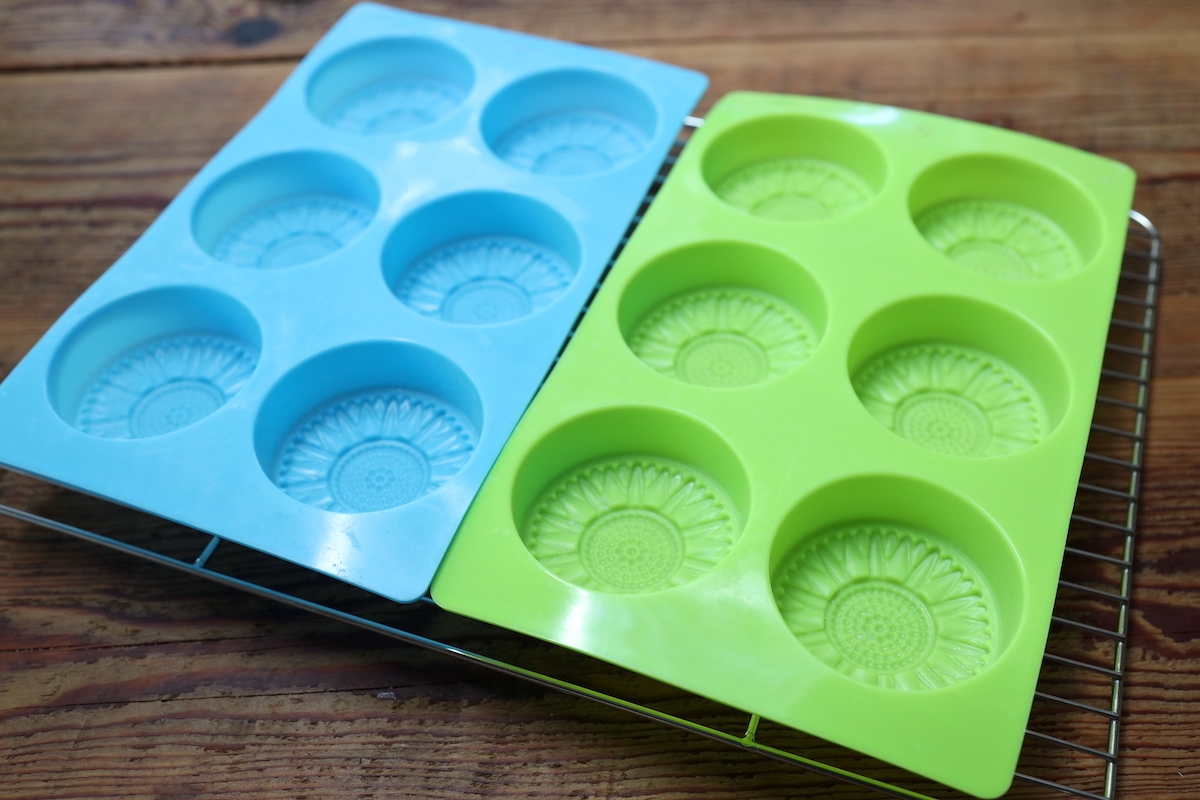
How to Make Your Own Dish Soap Bar
Begin by gathering your oils (coconut oil, tallow, and castor oil).
Weigh the necessary amount of each oil, taring the scale between each weight to zero it out. I do this directly in a small saucepan.
Melt the oils over low to medium heat.
Set the melted oils aside to cool and weigh out your lye and water. We always weigh the water out in a stainless-steel bowl and work with stainless utensils because the heat of the lye water solution could chew through wood, melt plastic, or crack glass.
NOTE: When working with lye, it’s best to dress appropriately, fully covered with protective eyewear and gloves. It’s also important to make your lye solution in a well-ventilated area, ideally outdoors.
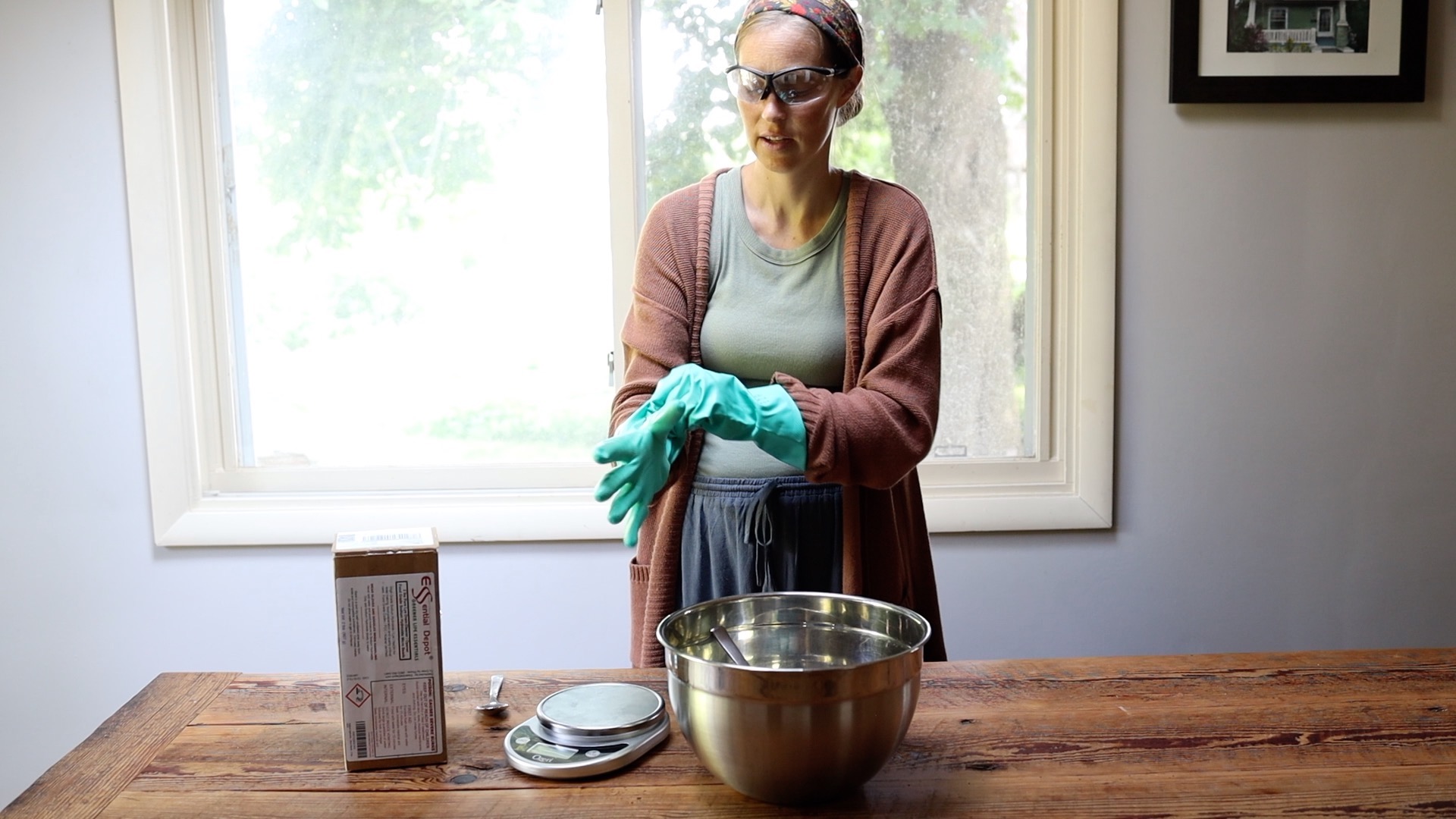
Bring the measured water and lye outside and slowly add the lye to the water (never the opposite way around), stirring gently.
Once the solution changes from cloudy to clear, let the lye mixture sit for 10-15 minutes outside to cool down.
When it has cooled and your oils are around 100°F, it’s time to mix the lye solution with your oils.
Carefully pour the lye solution into the oils. Using a stick blender or immersion blender, blend them together until trace is reached. Trace is when the oils are emulsified in the water and no longer separated. In my experience this happens pretty quickly, within the first 10-20 seconds of blending.
Add essential oils, as desired, then blend again for a few more seconds until everything is mixed but still has a texture that is easy to pour.
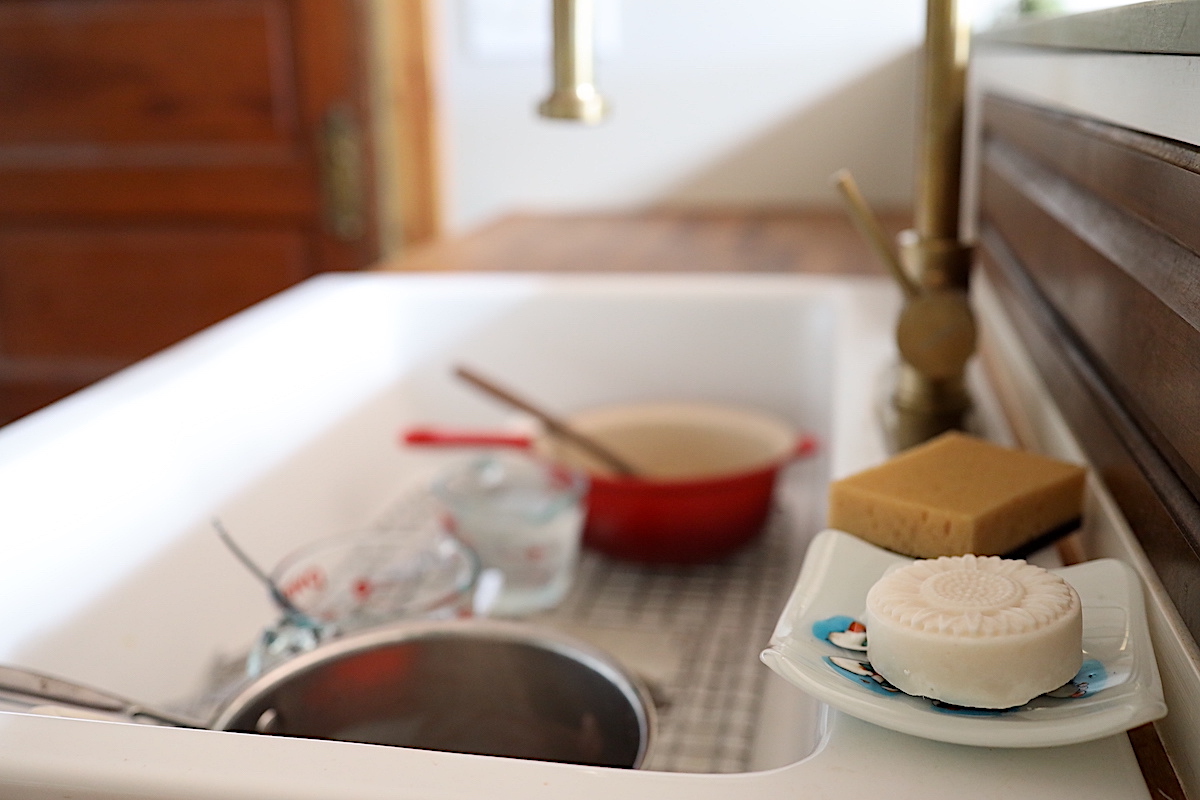
Tip: One of the most common mistakes (that I’ve made many times) is overmixing. This causes the mixture to be too thick and can be challenging to pour and cause the texture to be too thick resulting in not as pretty of bars. You are shooting for more of a thin pudding texture, not a thick pudding.
But if this happens to you, stay the course. The soap bars will still work just fine!
After everything is mixed together, pour the soap into molds. You can use a traditional soap mold or recently we bought this sunflower mold that is so fun!
Let the soap bars set for 24 hours and then remove from the mold. If you are using a soap bar mold, now is the time to slice into bars.
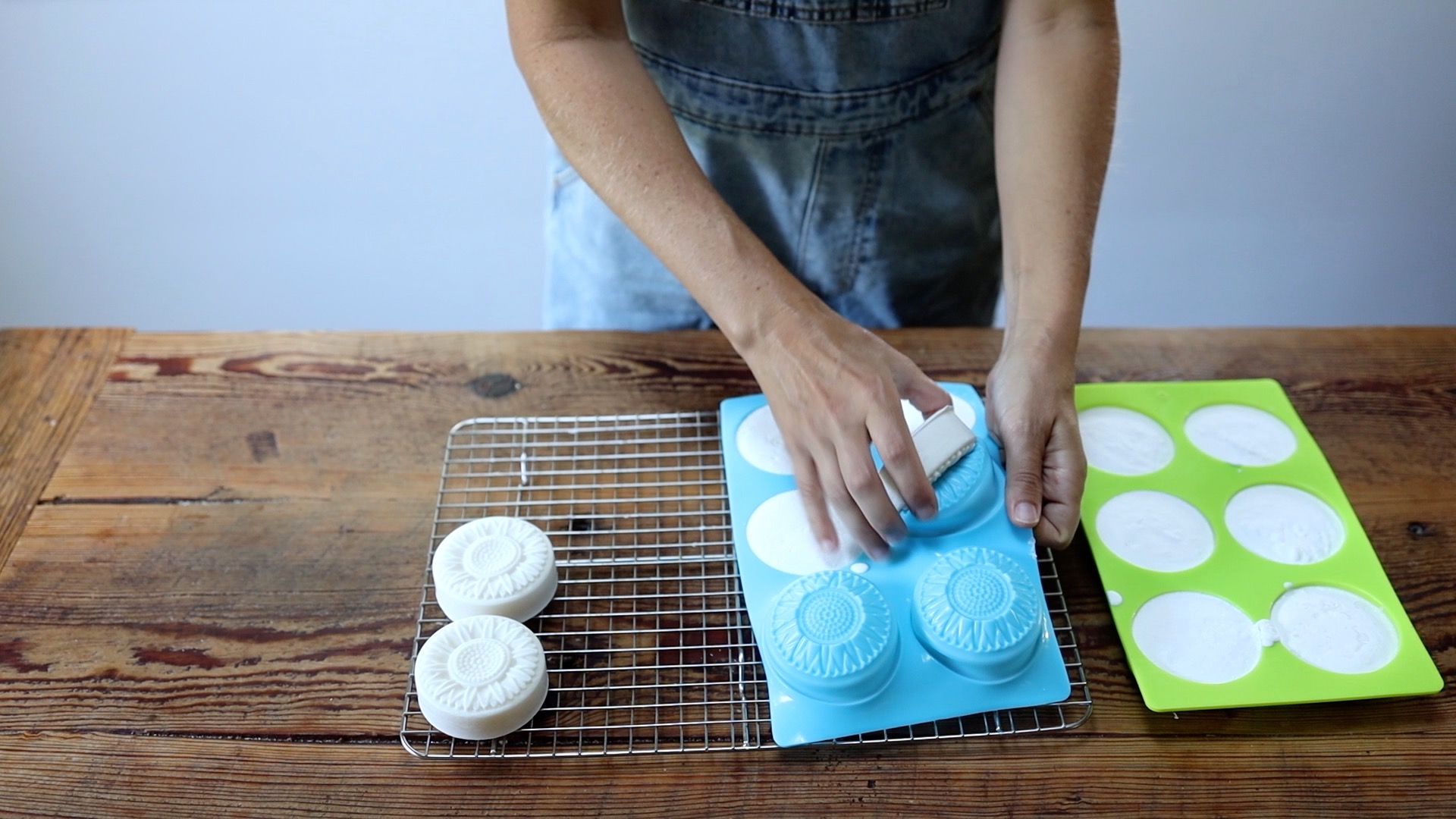
Lay the bars out on a drying rack or well-ventilated area, in a dark, cool place for 4 weeks to cure.
After 4 weeks, the solid dish soap bars are ready to use!
How did you create your soap recipe?
I used this soap calculator to create this recipe to determine the proper ratios and qualities that I desired in a dish soap bar.
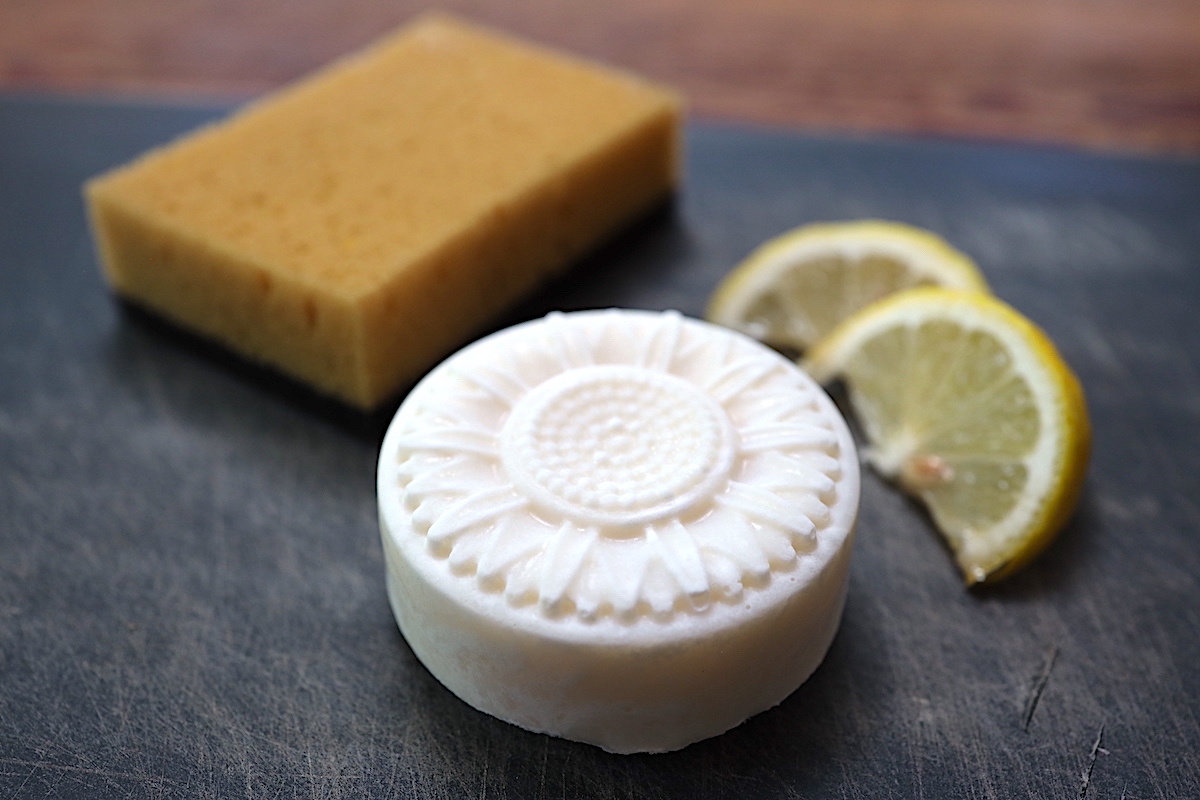
How much super fat is in these bars?
Super fat is the percentage of oils that does not saponify by the lye in the soap making process so it’s the extra oil that is free floating in the soap bar. For most body soap or shampoo bars, a super fat of 5%-15% is normal to help give moisture and luxuriousness to the soap.
However, in the case of these dish soap bars, the super fat is actually zero. This is because I wanted to make a bar where all of the oils were saponified by the lye into soap so there would not be residual oils that could leave residue on dishes.
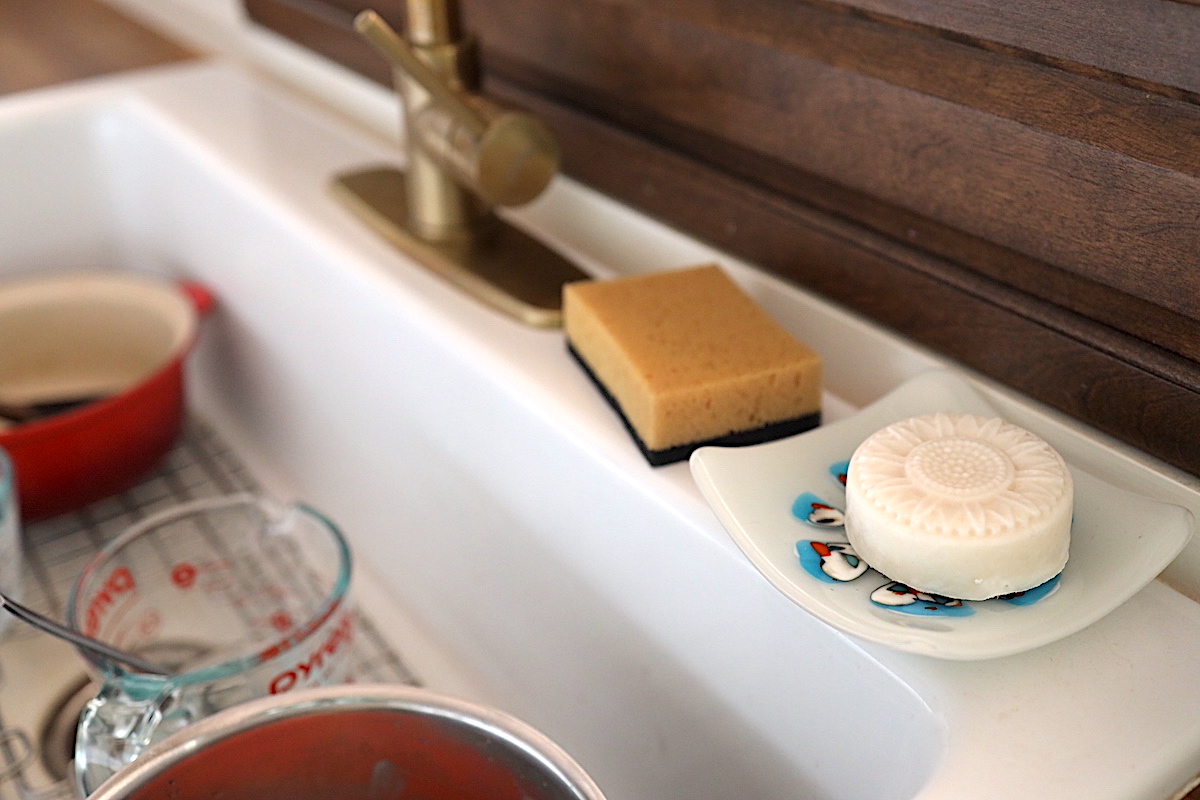
How long do they last?
We typically go through one solid homemade dish soap bar ever 2-3 weeks. This recipe makes 12 bars that are each 3-3.5 oz so making this homemade soap should last one family roughly 6 months. To store, keep in a cool, dark place. They will store fine for several months.
How do you use a dish soap bar?
It took a bit of time to transition from using liquid soap from the grocery store to a solid dish soap bar. But once we got used to it, we really like it! The process is the same for hand washing dishes. Wet a clean sponge with warm water and then dab or rub with your soap bar. You will quickly notice lots of lather forming. Wash dishes as you normally would, cleaning with the soap and rinsing in hot water.
Dish Soap Bar Recipe (with Tallow)
Yield: 12 3-3.5 oz bars
Ingredients:
– 25.02 oz Coconut Oil
– 1.09 oz Castor Oil
– 1.09 oz Tallow
– 10.34 oz Water
– 4.88 oz Lye (NaOH)
– 15-20 drops of Essential Oils (optional)
Directions:
1. Weigh out coconut oil, castor oil, and tallow in a small saucepan.
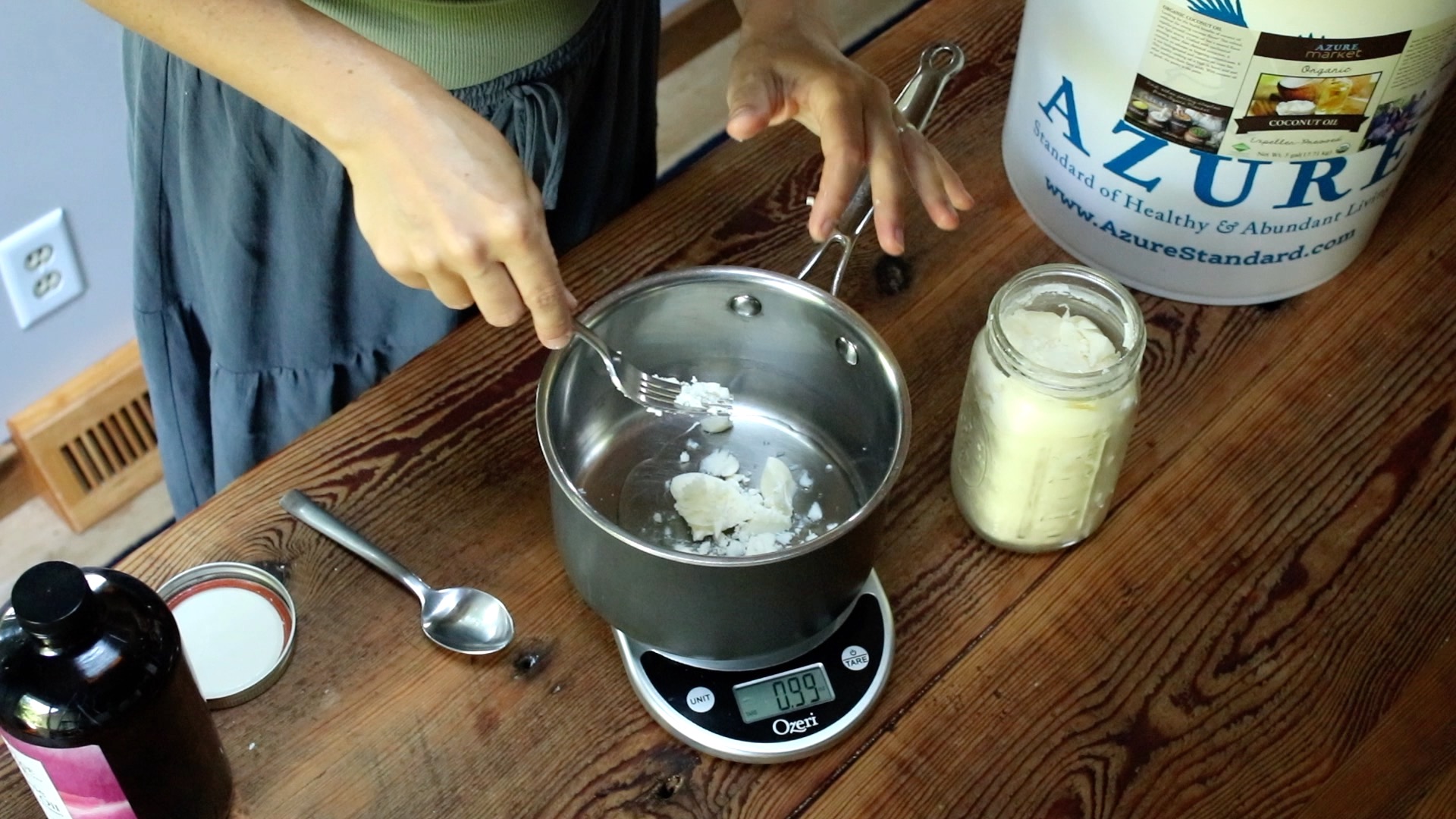
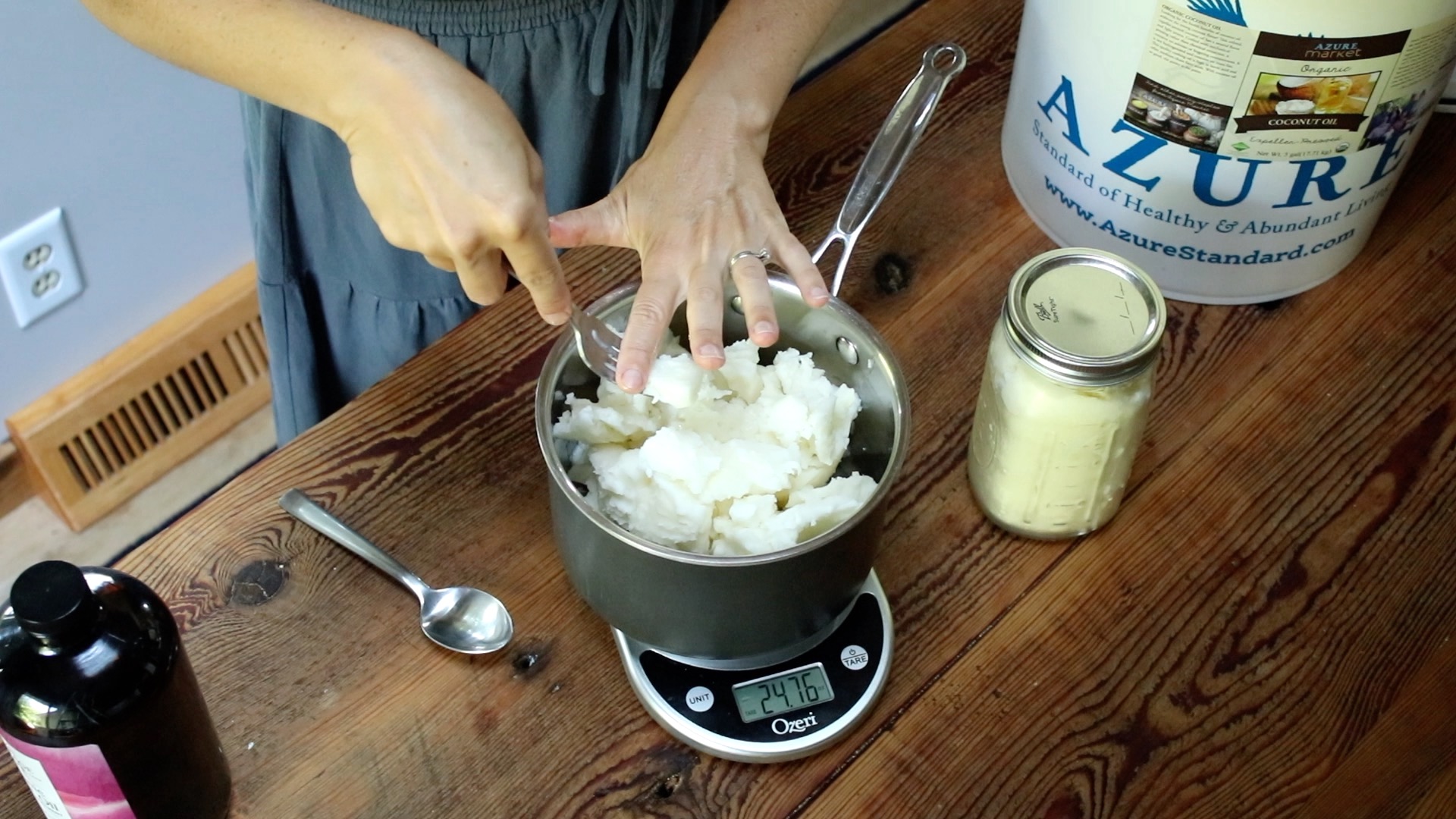
2. Melt oils over low-medium heat.
3. Once melted, remove from heat to let cool.
4. Meanwhile, using protective gloves and eyewear, measure out lye and water. We always measure our water in a stainless steel bowl to make the lye-water solution in.

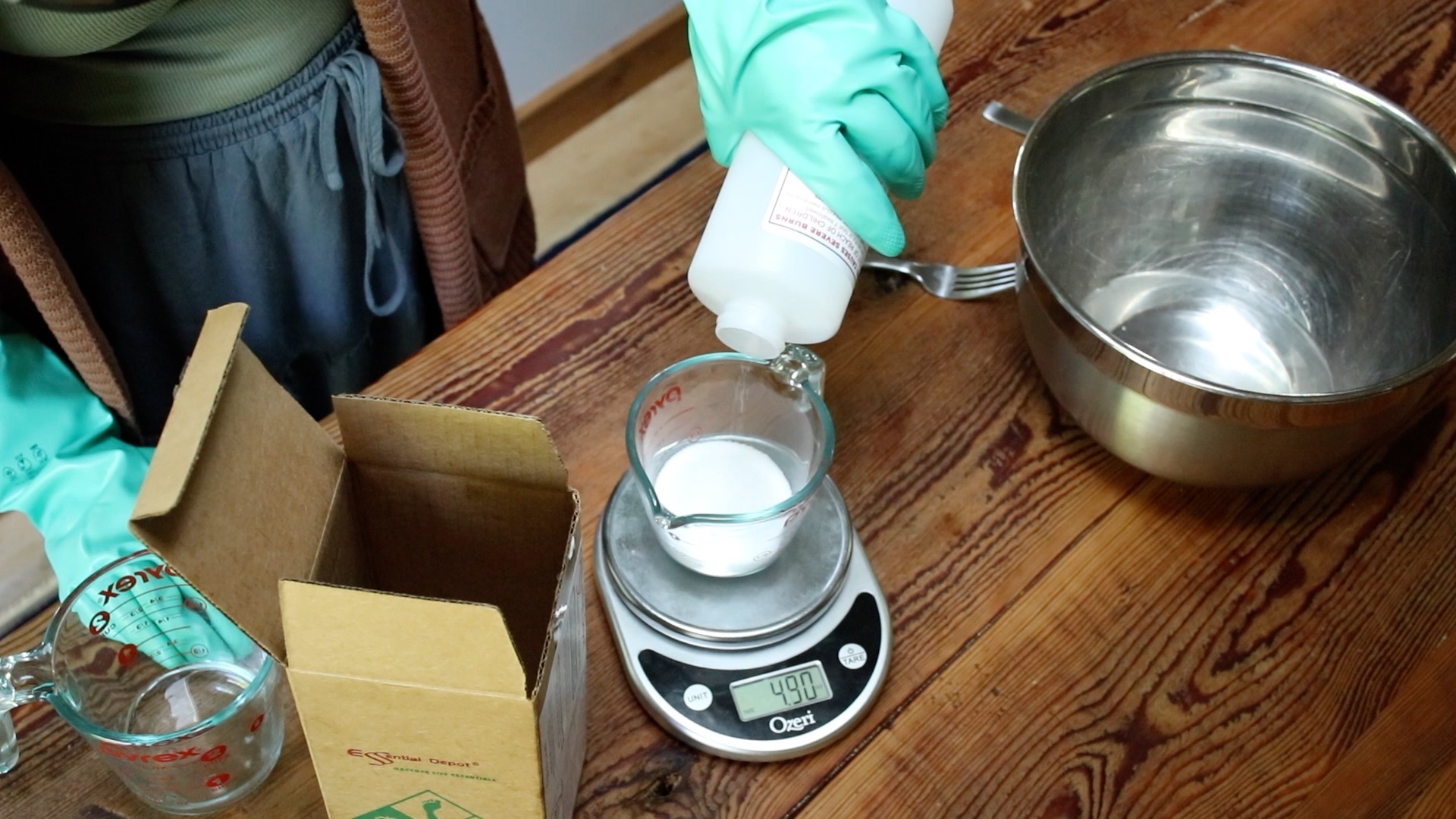
5. Bring lye and water outside or in a well ventilated area. Slowly add lye to water.
6. Mix lye into water gently until completely dissolved and the solution changes from cloudy to clear.


7. Let lye solution sit for 10-15 minutes to cool.
8. Once lye water has cooled and the oils are down to 100°F, carefully pour lye solution into oils.
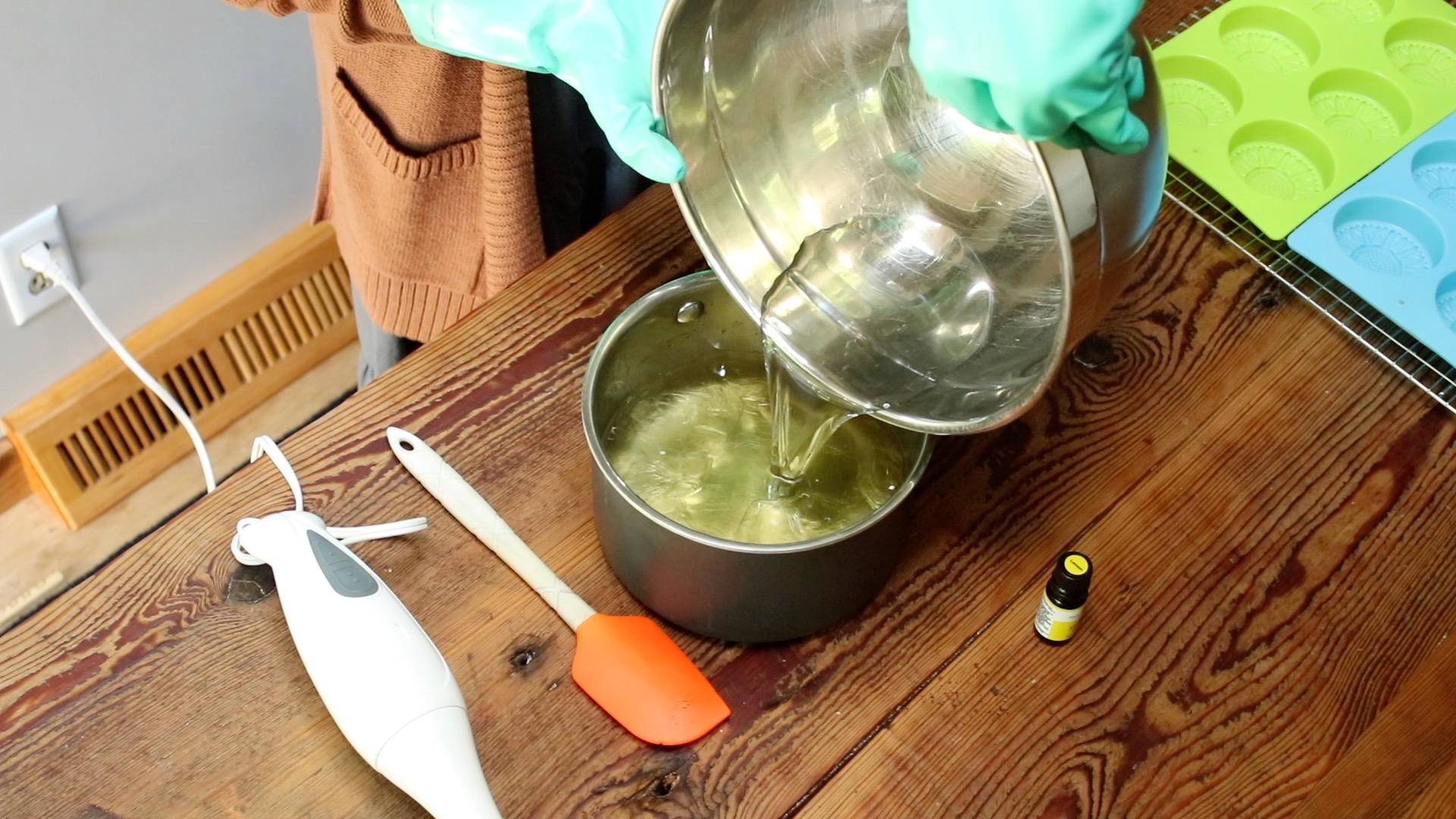
9. Using an immersion blender, blend mixture together for 10-20 seconds until they are emulsified (a thin pudding texture).


10. Add essential oils and blend again for a few more seconds.
11. Pour soap mixture into soap molds (we love these sweet sunflower molds).
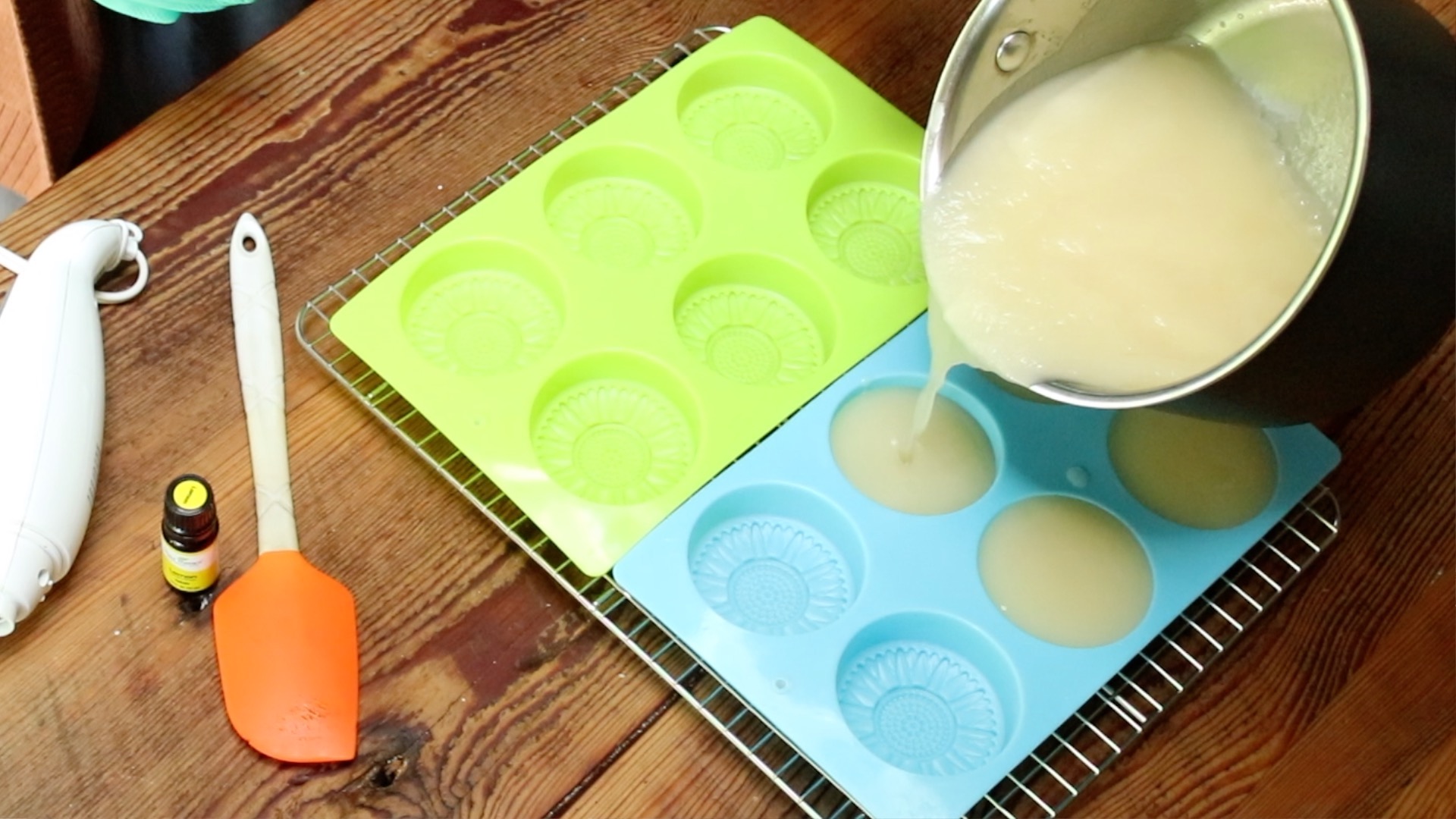
12. Let sit for 24 hours and remove from molds. If making soap bars, now is the time to slice into bars.
13. Place soap bars on a dry rack or something similar in a well-ventilated, cool and dark area for 4 weeks to cure.
Dish Soap Bar Recipe (without Tallow)
Ingredients:
– 26.0 oz Coconut oil
– 1.5 oz Castor oil
– 10.45 oz Water
– 4.96 oz Lye (NaOH)
– 15-20 drops Essential Oils (optional)
Follow the same directions as the above recipe.
As an Amazon Associate, we earn from qualifying purchases. This means we earn a small commission at no cost to you. We are so appreciative of your support!
More of our Favorite DIY Recipes:
- DIY Tallow Shampoo Bar (that actually works!)
- Simple Homemade Sunscreen with Tallow
- DIY Drawing Salve for Stings, Bites, & Splinters
- DIY Tallow Magnesium Lotion
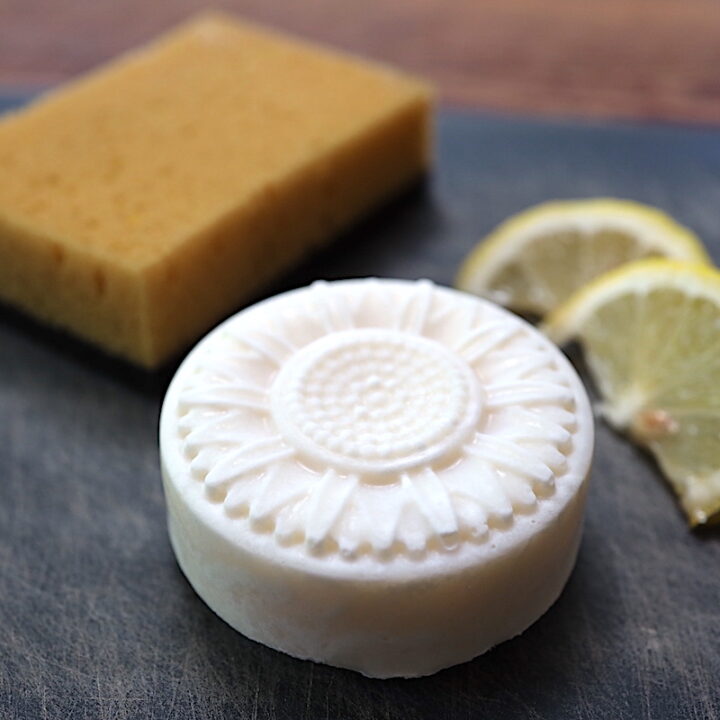
Homemade Dish Soap Bar Recipe w/ Tallow
For years, I wanted to swap out store-bought dish soap for something homemade, natural, and ideally without the waste. This homemade dish soap bar recipe is the answer! Read on to learn how to make it yourself.
Ingredients
- 25.02 oz Coconut Oil
- 1.09 oz Castor Oil
- 1.09 oz Tallow
- 10.34 oz Water
- 4.88 oz Lye (NaOH)
- 15-20 drops Essential Oils (optional)
Instructions
- Weigh out coconut oil, castor oil, and tallow in a small saucepan.
- Melt oils over low-medium heat.
- Once melted, remove from heat to let cool.
- Meanwhile, using protective gloves and eyewear, measure out lye and water. We always measure our water in a stainless steel bowl to make the lye-water solution in.
- Bring lye and water outside or in a well ventilated area. Slowly add lye to water.
- Mix lye into water gently until completely dissolved and the solution changes from cloudy to clear.
- Let lye solution sit for 10-15 minutes to cool.
- Once lye water has cooled and the oils are down to 100°F, carefully pour lye solution into oils.
- Using an immersion blender, blend mixture together for 10-20 seconds until they are emulsified (a thin pudding texture).
- Add essential oils and blend again for a few more seconds.
- Pour soap mixture into soap molds (we love these sweet sunflower molds).
- Let sit for 24 hours and remove from molds. If making soap bars, now is the time to slice into bars.
- Place soap bars on a dry rack or something similar in a well-ventilated, cool and dark area for 4 weeks to cure.
Notes
Dish Soap Bar Recipe without Tallow
Ingredients:
26.0 oz Coconut oil
1.5 oz Castor oil
10.45 oz Water
4.96 oz Lye (NaOH)
Follow the same directions as the above recipe.
Pin it for later!
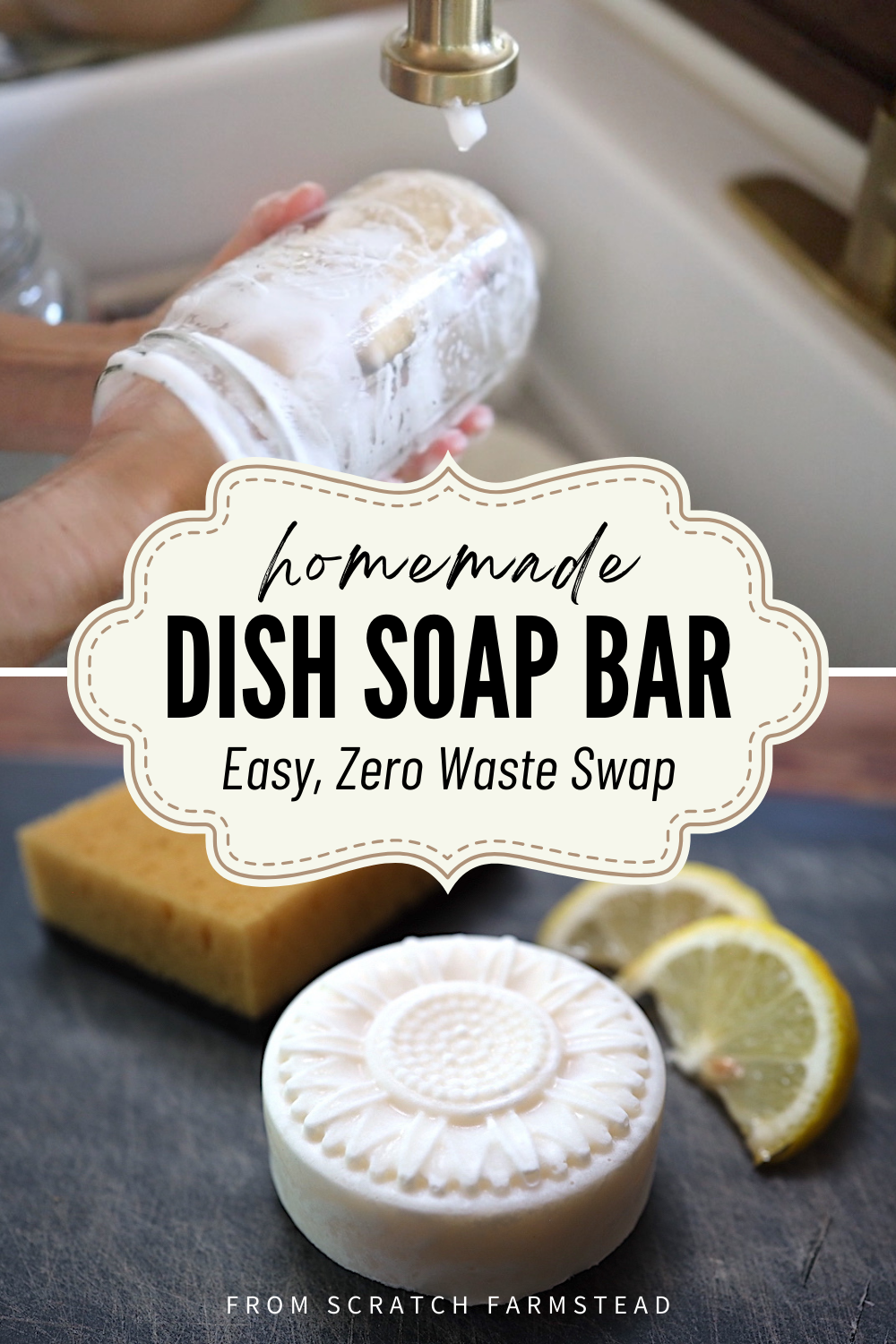




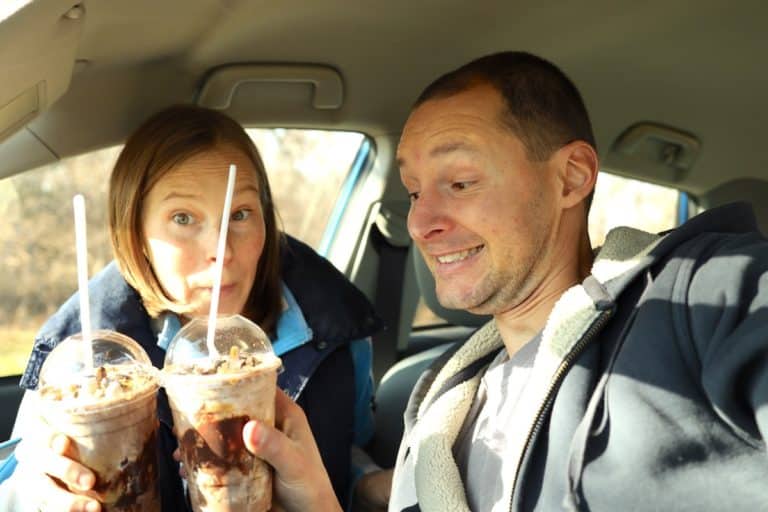

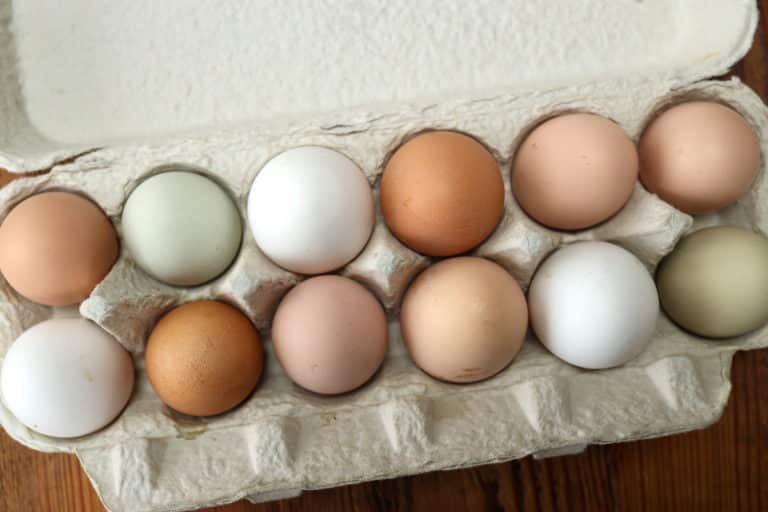
This EXACTLY what I was looking for! I can’t wait to give it a try! I’m going to be asking a couple of friends to get together and we’ll make it a “fellowship” of friends to do together, even though it’s simple enough to do alone. At the least, we’ll be able to try it and see if it’s something we want. I’m personally glad for this recipe! Once made, I’ll come back and update my comment.
That’s such a fun idea!! I hope you like this one!
Can this soap be used in the dishwasher?
Unfortunately, I don’t think this recipe would work for the dishwasher. We’ve only used it for washing dishes by hand.
Thank you very much for this recipe. I am looking forward to trying it.
You’re welcome! Hope you love it!
I enjoy watching your videos on YouTube and learning about how you all live. Thanks for sharing this how-to and the recipe. I made a batch of this and can’t wait to try it after it cures.
Do the bars have to be on an actual rack to cure or can they be on something like wax paper or parchment paper?
Thank you! Wax paper or parchment paper would work great!
Could you use this on the body too during a shower or bath or hands for use when washing hands after restroom?
I use it as a hand soap sometimes since that’s what I have at the sink and it’s not irritating at all. That being said it’s definitely more cleansing and harsh than your standard body soap so I’d avoid using it as a bath soap.
hello suet is expensive to come by but i have a lot of bear fat which is free. would this
work in place of suet as the tallow part. Bear tallow sets up hard and is used in other soaps. I wondered if it could work in the shampoo bar also?
Hi! I don’t have personal experience with bear fat but I think bear fat would substitute just fine in these recipes.
This is literally the best dish soap I have ever used. I have given several away and the recipients enjoy them too.
Woohoo! Love hearing this. Thanks for sharing!
Hi There,
Looking forward to trying your recipes.
Where are the affiliate links?
Thanks
Hi there! I think most of our amazon links are affiliate links. Hope you enjoy the recipes!
Could this be made using the mold and cutting into rectangles like you do for shampoo bars?
Yes! But instead of waiting 24 hours like with the soap bars, these firm up much more quickly. You could probably cut after just a couple of hours.
Thank you!! I’m loving learning how to make all these things using your recipes! <3